READY TO GET STARTED?
REQUEST A FREE ESTIMATE
Fill out the form below or call (888) 466-7849 for a free, no-obligation estimate.
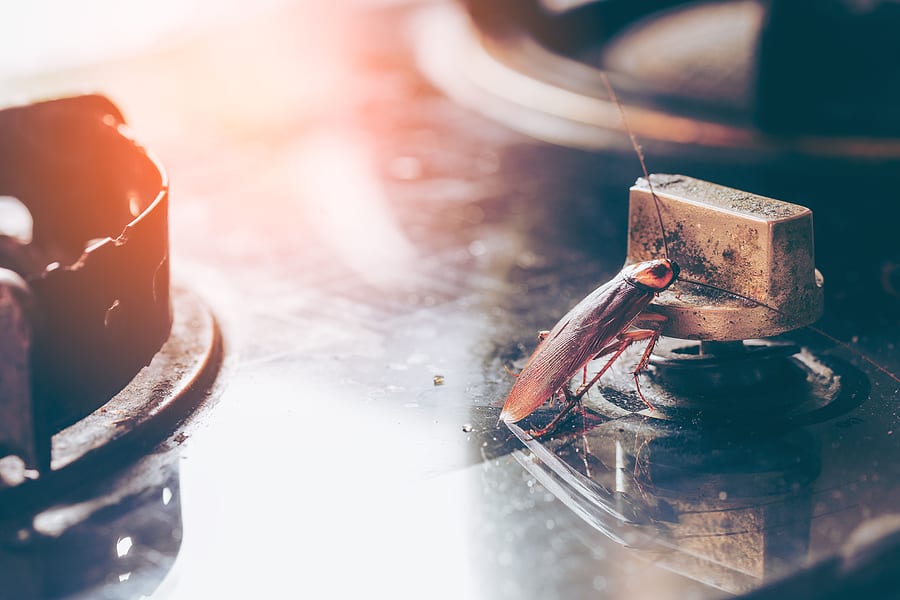
If you’ve ever spotted a cockroach inside your home, you know how alarming it can be! Once these pests get inside the home, they can spread contamination and even trigger allergic reactions. The best way to deter roaches from your home is understanding the types of roach species invading and what preventative measures to place to avoid their infestation. Check out the 3 common roaches found in Florida and how you can prevent them.
These roaches are one of the largest roach species, getting up to 1.5 inches in length and even developing wings towards the end of their lifecycle! They have a reddish-brown body with a yellowish figure-eight pattern on the back of their head. You can often find them in basements, sewers, kitchens, and bathrooms looking for water and food to survive.
These roaches got their name from the two light brown bands that appear across its wings. The brown-banded roach prefers to have warmer, drier, and higher locations to inhabit, often being found in cabinets and even behind pictures! A good indication these roaches are inside your home is finding their egg cases in or underneath furniture.
Preferring warm, humid spaces, German cockroaches will often be found where humans eat, like kitchens. Often, you can find them around appliance motors, like refrigerators and dishwashers, for its heat. You can identify these roaches by their two dark brown stripes on their back and wings.
The best way to prevent roaches from invading your home is by placing preventative measures. Here are some easy, do-it-yourself roach control tips:
If you’ve noticed these roaches inside your home, it’s best to call your local pest control company to eliminate them. Pest professionals will inspect your home, identify the type of roach, and provide you with the best treatment plan.
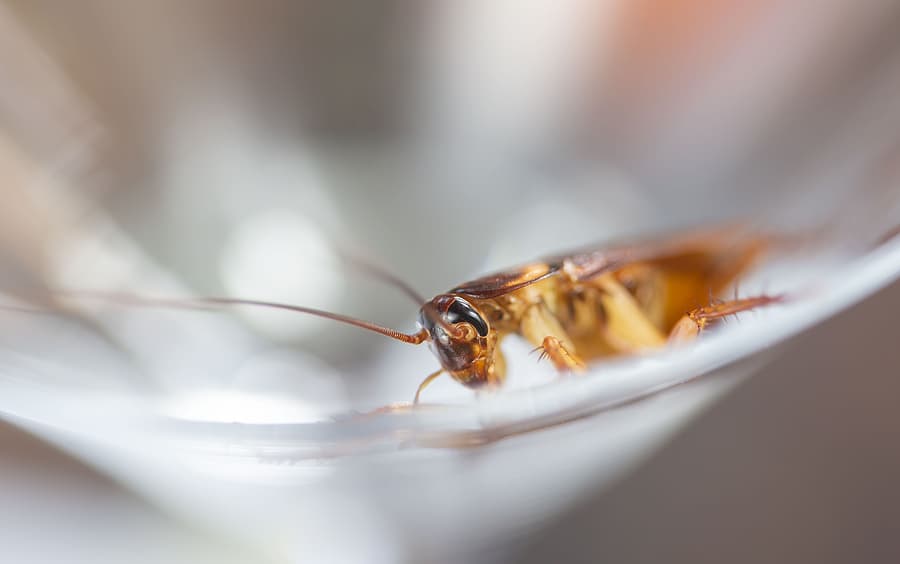
Cockroaches are common household pests that are highly adaptable. They are skilled at finding their way indoors and multiplying quickly to establish an infestation in your home. It is important to know what attracts roaches to your home in order to prevent them. There are 3 main things that will bring roaches to your door: food, water, and shelter. By eliminating these 3 things, your home will become much less attractive to these and other pests. Here is our step-by-step guide to preventing cockroaches from infesting your home.
Cockroaches are scavengers. While they prefer sugar, carbs, and protein, they will eat just about anything. Clean up any leftover food or spills and crumbs on tables, counters, and appliances. Store your food in airtight containers. Rinse cans, bottles, jugs, etc. before throwing them away. Empty your garbage regularly and use trash cans with lids. Don’t leave your dirty dishes out overnight. Wipe down your counters with disinfectant every night. Try to limit food consumption to one room (e.g. the dining room) to help reduce spills and crumbs throughout your home. Store your pet food in sealed containers and don’t leave pet food bowls out overnight.
Roaches can actually go for a week or 2 without it if they are getting enough moisture from their food. Despite this, they will ultimately require water to survive and will seek it out in your home. Remove any standing water both in and around your home. Don’t leave any water in sinks or near drains, especially overnight. Keep excess moisture out of your home, basement, and crawlspace with a dehumidifier. Consider installing a moisture barrier or crawlspace enclosure. Repair any damaged or leaky pipes immediately. Clear blocked drains in the home. Keep gutters free of debris. Don’t leave your pet’s water bowls out overnight.
Remove clutter from your home, garage, and attic. Get rid of any old cardboard boxes, newspapers, and magazines. Dust and vacuum frequently. Paint or varnish your wood shelves to seal cracks and crevices where roaches can hide, or consider replacing them with metal or plastic shelving. Check walls, skirting, electrical outlets, sinks, cabinets, and baseboards for cracks and crevices and seal any that you find. Inspect all items before bringing them into your home, including packages, storage boxes, grocery bags, and used appliances. Seal around utility pipes and wall junctures. Make sure windows and doors are sealed and use weatherstripping on them. Trim back any heavy vegetation from your exterior walls and try not to stack firewood against your house.
Cockroaches can be dangerous to you and your family, contaminating surfaces and triggering asthma and allergies. If you have problems with a cockroach infestation, contact your local pest control company for an inspection and cockroach treatment plan.
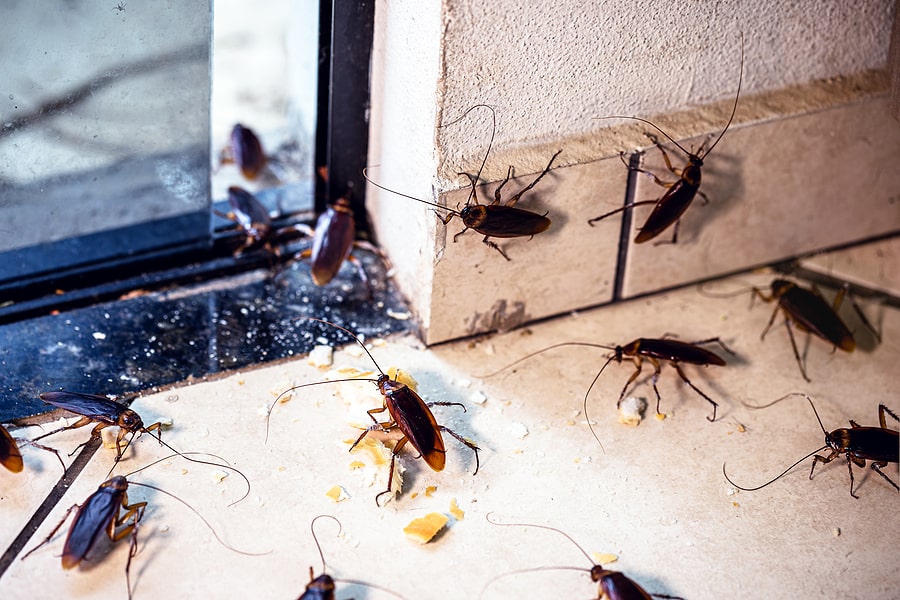
Cockroaches have a negative connotation in the minds of the general public, but this is not always the case. Cockroaches are attracted to a tidy home because of the availability of food, water, and shelter. Although the sight of even a single cockroach in your home is likely to cause some level of alarm, it is unlikely that this lone insect is indicative of a widespread problem. Roaches are social pests that can quickly multiply. It’s likely that if you see one, there are others hiding in the shadows or in some crevices, and the situation could quickly escalate into a full-blown infestation.
Humans should avoid coming into contact with cockroaches because the bacteria they carry on their bodies and feet can spread to any surface they walk across. They also have the potential to bring on allergic reactions and asthma attacks. A cockroach infestation might exist even if you don’t spot any of the insects yourself. Signs of cockroaches include dead bodies, small, brown, oval-shaped eggs or eggshells, dark, powdery droppings that resemble ground coffee, and a persistent musty odor.
Preventative measures are the most effective means of cockroach control. Cockroach prevention can be accomplished by:
The crumbs and dirt that humans leave behind are a magnet for roaches. After each meal, clean the dishes and put them away. Get rid of the crumbs and mop up the spills right away. Get rid of the trash every night. Remove all grease from cooking surfaces. Put perishables in containers that can’t be opened easily. Make regular use of a broom, mop, and vacuum. Do not leave pet supplies out overnight.
Remove potential hiding spots for roaches by clearing away any clutter. Keep rooms decluttered, especially those that aren’t used frequently, and maintain a regular dusting schedule. Skip the cardboard boxes and opt instead for plastic containers with secure lids. Roaches thrive in cardboard and newspaper, so get rid of it.
Roaches can enter homes through crevices and under doors. By locating these entry points and sealing them, you can prevent cockroaches and other pests from entering your home. The areas around the windows and doors, the foundation and the roof, the attic and the crawlspace vents, and the openings for the utility and plumbing lines should all be thoroughly inspected. Caulk can be used to fill in tiny cracks and holes. Use steel wool and foam to seal larger holes, especially those near pipes. It is possible to use fine mesh wire to create a seal around roof vents and chimneys.
Moisture is essential for the survival of roaches and most other pests. For this reason, roaches can be lured into your home by the presence of standing water or an abundance of moisture. Make it a habit to routinely check for leaks in the plumbing system and to fix any you find. Inspect for leaks and excess moisture around the faucets, sinks, refrigerator, and other appliances in the home. Extra moisture in homes often originates in the crawl space. If you’re worried about moisture under your house, an enclosed crawlspace may be the answer.
It can be very challenging to get rid of a cockroach infestation. In the fight against roaches, prevention can only go so far. Get in touch with a professional pest control company if you think you have an infestation so they can help you figure out what kind of roaches you have, where they are getting in, and what they are eating, and then create a customized plan for cockroach control and elimination in the future.
How to Keep Pests Away from Your Stored Holiday Decorations
Termite Bond vs Termite Warranty
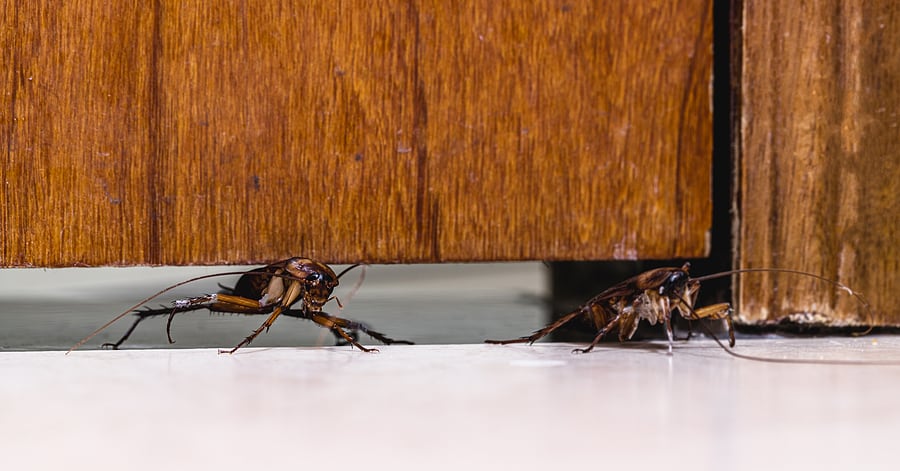
Roaches are one of the most common household pests. These pests are resilient, adapting to just about any environment. When you spot one cockroach, there are usually several more hidden out of sight. Cockroaches carry diseases, contaminate surfaces they come into contact with, and can trigger allergies and asthma. They are extremely difficult to get rid of once an infestation is established, both due to their resiliency and their ability to reproduce quickly and often. So what do you do if you see roaches in your home?
The first step is to identify what type of roach you are dealing with. Some of the most common cockroaches found in homes in the United States are American roaches, German roaches, and Oriental roaches. The type of roach you have and the size of the infestation are both determining factors in the course of treatment.
The second step is to contact the professionals. Because roaches are so difficult to get rid of, the services of a professional pest control company are beneficial. A technician will come out and give your home a thorough inspection to help determine the type and size of the infestation to set up a custom treatment plan that targets only the intended pests. They will also set you up with ongoing pest control in the future.
The final step is ongoing prevention to keep the roaches from coming back. Cockroaches come into your home in search of food and water. They usually thrive in warm, moist environments. Help keep them out by:
Add Some Shine to Your Crawl Space
Benefits to Winter Pest Control
Rodent Control Methods For Your Home
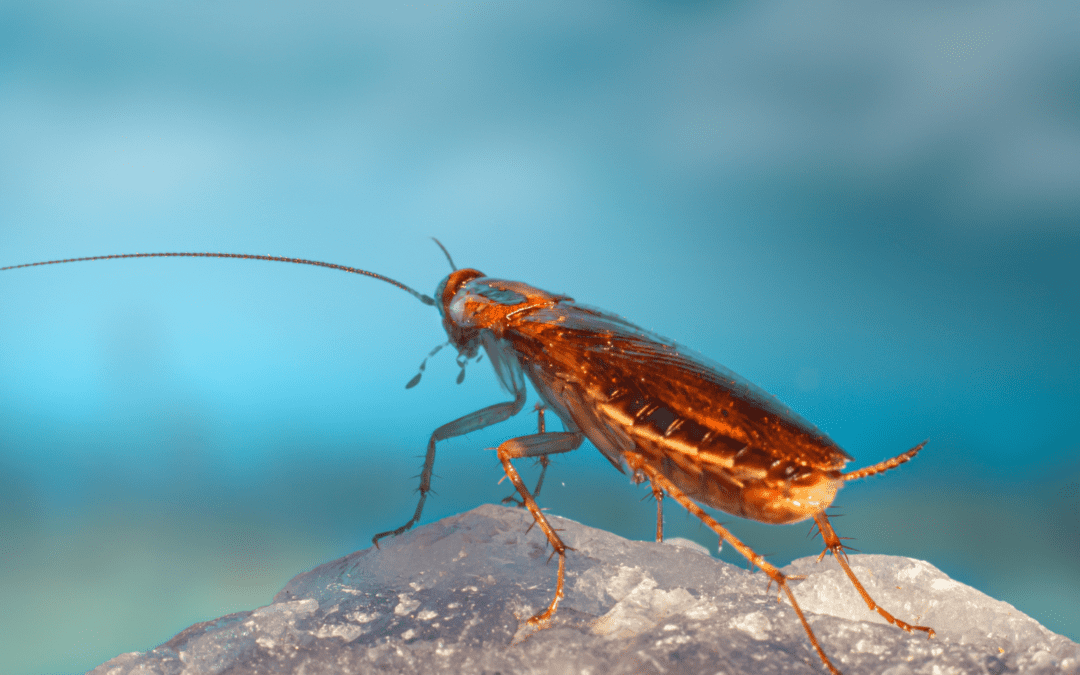
It’s never ideal to encounter cockroaches in your home. If you do, it’s best to know what types of cockroaches you’re dealing with to help determine the best way to eliminate them. Failing to remove these pests can lead to unpleasant outcomes, like allergies, that can potentially increase your chances of getting asthma.
We have broken down the three most common cockroaches found in the south and how to keep them away; let’s check it out!
This large out-of-the-house infesting roach can get up to 1.5 inches in length. These roaches develop wings towards the end of their life cycle, with males having some longer than their bodies. You can usually identify them by the yellow band located behind their head.
The American cockroach can typically be found where food is abundant. They also prefer drains that aren’t used as often. In the wild, they prefer dark or damp wood piles.
One of the most common species found worldwide, the German cockroach is generally light to dark brown and has two stripes near the back of its head. This species does have wings. They prefer dark, moist places. Since they don’t do well in the cold, they thrive in the southern climate.
This species first entered the U.S. in 1903 and is now found nationwide. The brown-banded cockroach got its name from the two light brown bands that appear across its wings. They prefer warmer, drier, and higher locations in a room and can be found mostly in cabinets and behind picture frames. This species will typically hide its egg cases in or underneath furniture.
While prevention can help keep cockroaches away, sometimes it’s best to get a professional involved. A local pest control company will be able to inspect your home and provide you with the best treatment and prevention plan going forward.